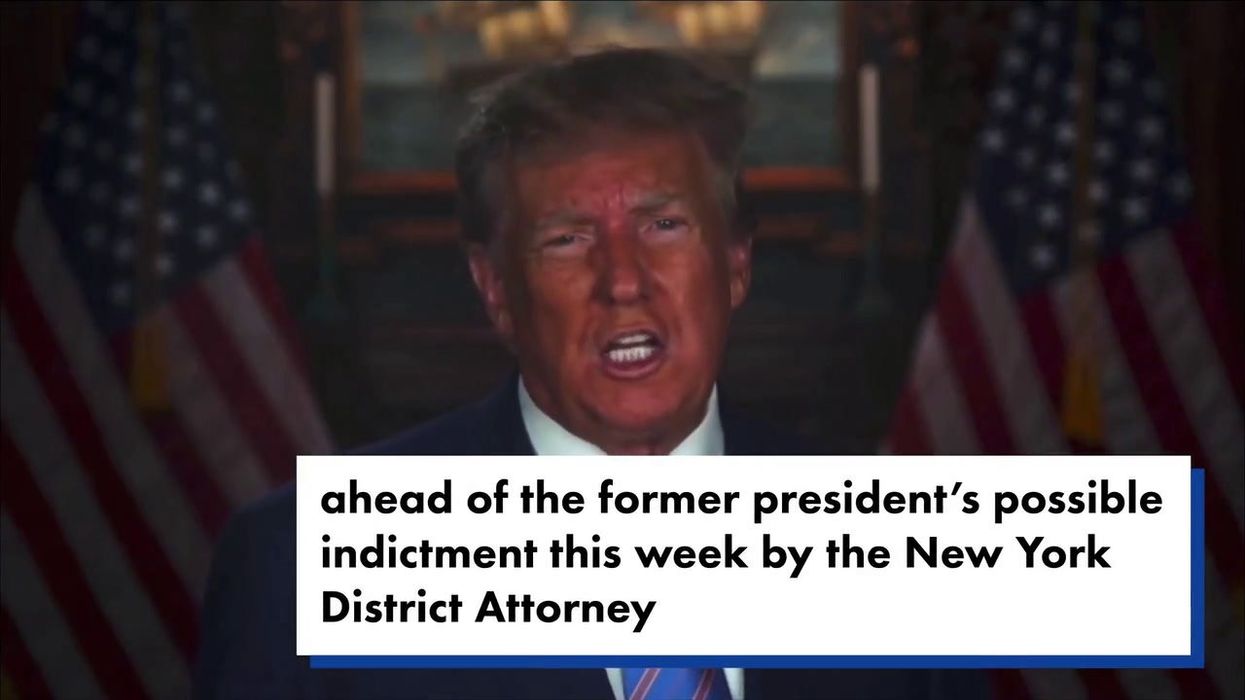Science & Tech
Becca Monaghan
Mar 27, 2023
Chilling deepfakes claiming to show Trump being arrested flood Twitter
content.jwplatform.com
Freakishly realistic images featuring the likes of Donald Trump and Pope Francis have been making their rounds on social media.
For the blissfully unaware, a deepfake is an image or video that uses artificial intelligence to depict hyper-real scenarios. They're often created without consent and to spread malicious information.
Earlier this week, Trump became the talking point on Twitter due to a string of AI-generated photos depicting his arrest. While they were completely false, they fooled some spectators given he claimed he was set to be arrested on Tuesday 21 March.
Sign up for our free Indy100 weekly newsletter
A new week has welcomed a new round of deepfakes – Pope Francis in an East 17-inspired white puffer coat. Despite being a humorous take, the image of the 86-year-old donning a newfound street style has, once again, demonstrated how realistic they can actually look.
"As we’ve seen with other forms of misinformation and disinformation online, the consequences of deepfakes can range from the relatively harmless to the extremely dangerous," cybersecurity expert and host of What the Hack, Adam Levin told Indy100. "Deepfakes can cause wild swings in financial markets, they can be convincing enough to make an innocent person appear guilty of a crime, or ruin someone’s reputation."
Here are three tell-all signs that an image may be a deepfake:
Deepfakes are notoriously 'bad at hands'
Despite the impressive technology, it appears as though it can't wrap its head around editing hands.
Some AI-generated images will feature extra fingers or strange features.
Look out for facial imperfections
"Research shows your face is made up of 43 different muscles that can work together in endless unique combinations. Therefore, if you notice imperfections or blurred image quality around the hairline, there is a chance you aren't talking to who you think you are," Nicholas Crouch, an expert from Scams.info, said.
Most streaming services offer a setting to amend the speed of a video. You can utilise this to double-check whether the content feels "off".
Crouch suggested the following two methods:
"1. Slowing down the video will exaggerate any flaws in facial movement and allow you to properly analyse key features like hair and teeth for imperfections.
"2. Speeding up the video will emphasise any discrepancies within the speed of blinking in relation to the movement of facial features."
Use your intuition
"It’s important to note that with the advancements in this technology, we could fastly be approaching times when a deepfake is indistinguishable from a real video," Crouch explained. "So, when all else fails, your intuition can save you.
"If the content of a video that you’re being shown seems too good to be true, or the video shows the person in question out of character, there is a high chance that this is true so make sure you close your browser and do not enter any personal information."
As for whether there are any repercussions for creating or sharing deepfakes, Levin noted the difficulties of tracing content back to the person.
"The legal system hasn’t really caught up to the technology," he explained. "The legality and ethics of deepfakes are extremely murky, especially when using the likeness of a public figure."
Have your say in our news democracy. Click the upvote icon at the top of the page to help raise this article through the indy100 rankings.
Top 100
The Conversation (0)













